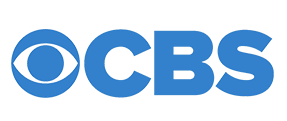Improving High Performance with Mental Rehearsal
- Vince Morales, MPS, MA, MCPC

- Jun 16, 2020
- 3 min read
Updated: Apr 14, 2022
It would help if you did a mental rehearsal with dynamic movements to up your performance significantly. Mental rehearsal is similar to visualization and Theatre of The Mind. With visualization or Theatre of the mind, you sit in a quiet spot, close your eyes, and begin. Doing mental rehearsal with movements adds to your visualization and your muscle memory as well.
Let’s look at examples from business and the sports world. When speakers are preparing for a critical speech, they can improve their performance two-fold. They start by visualizing that they are walking up to the podium, and they can add in dynamic hand movements and use the upper body/face and shoulders by standing while doing this. Power movements with the hands trigger emotions and aid in installing memories for recall.
Let’s look at field goal kickers in the NFL in the sports world. Just practicing kicking the ball is insufficient. They need to do mental rehearsal and make the motion of kicking the ball. Once they follow through with the leg kick, they can continue to visualize the ball going deep through the center of the upright posts. During my competitive softball days, I would use visualization techniques for my softball swing, bat swing angles and mechanics, timing, “Ikey Mickey” swing/chin techniques, legs for generating power, and powering through the contact zone and bat swing follow-through. It sounds like a lot to remember, right? Nope, because muscle memory remembered for me.
Now that we have discussed the basics of mental rehearsal let’s break it down.
The brain plays different roles in mental rehearsal, from seeing and hearing the performance to providing natural energy chemicals to make you feel great while doing a fantastic job.
For muscle memory, we use the cerebellum, a part of the brain that contains several different sections. Although it is a relatively small part of your brain, it has approximately 50% of its neurons. According to studies, the cerebellum gets activated when the cerebellum visualizes a movement. As a result, new neural connections form, enhancing muscle memory for peak performance in the future.
Before starting a mental rehearsal, think about what could go wrong before your next performance. Listing out possible issues and identifying solutions slows down the chance of having lousy execution because something went wrong.
In our example of making a speech, the microphone may stop working, or you get too hot and uncomfortable. Do you have a second microphone available, and do you have the option of taking off an outer layer of clothes like your coat or a quick break for a change of clothes?
Let’s look at examples from business and the sports world. When a speaker is preparing for a significant speech, they can improve their performance two-fold. The speaker can start by visualizing walking up to the podium, and they can add in dynamic hand movements and use the upper body/face and shoulders by standing while doing this. Power movements with the hands trigger emotions and aid in recalling memories. Understanding what emotions will serve you during peak performance times is necessary and call them up instantly.
Go through your first mental rehearsal and remember what went well and wrong. If you were using dynamic hand movements that didn’t help trigger the right emotion, rehearse again using a different hand movement. For example, many people use the “jabbing finger” movement to help make their point. If that is not working, then try again using the right hand, striking the palm of the left-hand movement.
Go through the mental rehearsal repeatedly, changing and tweaking until you can give yourself high marks for an excellent performance. Studies have shown that mental rehearsal is not an instant fix-it button. Just like learning to play the piano, you must practice extensively. It is never-ending but will pay huge dividends in your overall success.





.png)









Comments